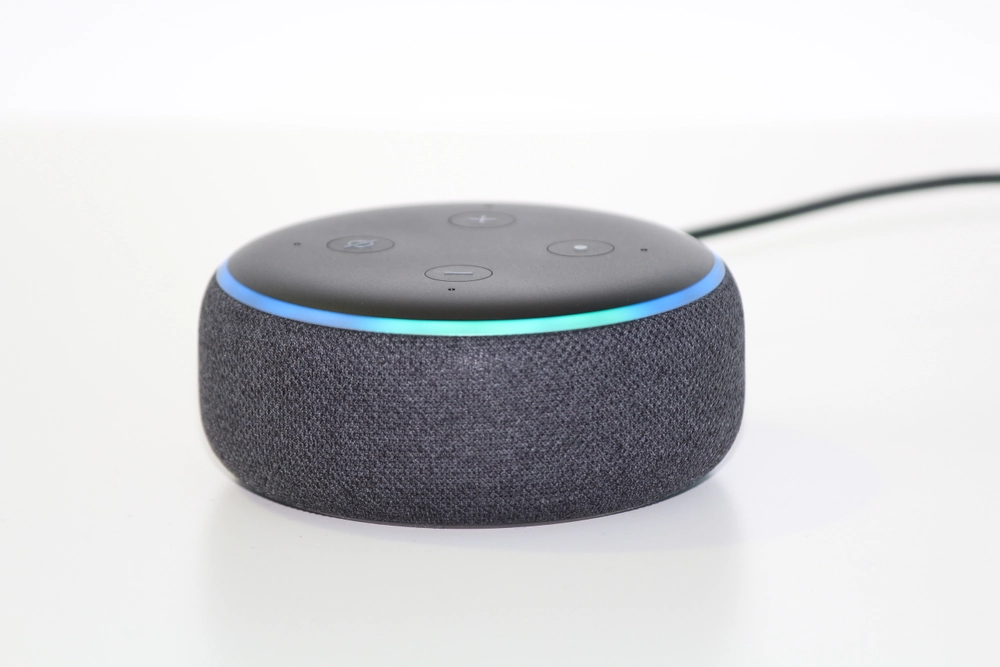Voice search is no longer a futuristic concept—it’s a reality reshaping how we interact with technology and search engines. Gone are the days when typing was the only way to get answers. Now, whether it’s asking Siri to find a nearby restaurant, querying Alexa about the weather, or using Google Assistant to get directions, users are increasingly relying on voice assistants for their everyday needs. This shift is not just a trend; it’s a fundamental change in user behavior that businesses can’t afford to ignore. With more people embracing voice search for quick and convenient access to information, it’s crucial for businesses to rethink and adapt their PPC strategies to align with this new way of searching.
In this blog, we’ll dive into the latest statistics and trends surrounding voice search, highlighting the impact on user behavior and providing actionable insights on how to optimize your ads for voice queries effectively. Get ready to transform your advertising game!
Voice Search by the Numbers
The rise of voice search has been nothing short of impressive, and it’s changing the game for how we find information. Just take a look at these eye-opening stats:
- 71% of people now prefer using their voice assistants to perform a search instead of typing it out. That’s a clear sign that folks want things done faster and easier (Source: PwC).
- By 2024, we’ll see over 8.4 billion voice assistant devices buzzing around the globe, creating a whole new world of opportunities for voice searches. That’s a ton of potential customers just waiting to be reached (Source: Statista).
- And here’s a fun fact: 55% of teenagers are using voice search daily. This isn’t just a passing trend; it’s become a staple in how younger generations interact with technology (Source: Google).
These numbers highlight that voice search isn’t just a novelty, it’s now a crucial part of daily life for many. If your PPC campaigns aren’t optimized for voice search, you’re probably letting a huge chance slip through your fingers. With more users leaning towards voice queries for quick answers—whether it’s asking for directions, finding nearby restaurants, or checking the weather—adjusting your strategies to fit this new landscape can significantly boost your chances of connecting with potential customers. Embracing voice search in your PPC efforts could be the key to staying relevant and driving more traffic to your business.
How Voice Search is Shaping User Behavior
Voice search is shaking things up in a way that’s pretty different from how we’ve traditionally approached search. When people type in a query, they tend to use shorthand or specific keywords, like “best pizza NYC.” But with voice searches, it’s a whole different ball game. We naturally ask questions, just like we would in a conversation, saying things like, “What’s the best pizza place near me?” These queries are not only longer but also framed more like real questions.
This shift in how people search is crucial for PPC advertisers to understand because it changes the game for keyword usage. The days of cramming ads with those clunky, short-tail keywords are behind us. If you want to connect with today’s users effectively, you need to prioritize conversational keywords. This means creating ads that blend seamlessly into voice search results, making it easier for potential customers to find what they’re looking for.
Optimizing Your PPC Campaigns for Voice Search

To stay ahead of the game, it’s crucial to adjust your PPC campaigns to cater to the unique nature of voice searches. With more people turning to voice assistants for quick answers, you want to ensure your ads resonate with this shift in search behavior. Here’s how you can make those adjustments.
1. Use Conversational Keywords
Voice searches are typically longer and more conversational than the queries people type out. For instance, instead of just searching for “cheap flights,” someone might say, “Where can I find the cheapest flights to Miami?” This means it’s time to rethink your keyword strategy to keep up with the way people are actually speaking.
How to Adapt:
- Target Long-Tail Keywords: Since voice queries are usually more extended than text-based searches, focusing on long-tail keywords is key. Instead of sticking to short, generic terms, go for phrases that reflect how people naturally talk. For example, if you’re selling shoes, consider using phrases like “What’s the best shoe brand for running?” instead of just “best running shoes.” This way, your ads will align better with what users are saying.
- Think in Questions: A lot of voice searches start with “Who,” “What,” “Where,” “When,” “Why,” or “How.” By incorporating these question-based keywords into your PPC strategy, you’ll match how users are speaking to their digital assistants. This approach not only makes your ads more relevant but also increases the chances of showing up in search results when users ask these questions.
2. Create Conversational Ad Copy
Once you’ve locked down those keywords, it’s time to turn your attention to your ad copy. Since voice search queries are often more conversational, your ad copy needs to reflect that same friendly, approachable style. Users are looking for quick answers, so it’s essential to provide clear, relevant solutions that directly address their needs.
Example:
Let’s say you run a local plumbing business. A common voice search might be, “Who can fix my leaky faucet quickly?” To make your ad stand out, your copy should respond directly to that need. Something like, “Need fast faucet repairs? Call us today for same-day service!” hits the mark perfectly. This response not only sounds more conversational but also aligns with the urgency implied in the user’s query.
By adopting this style, you’re not just providing information; you’re engaging with potential customers in a way that resonates with them. Think of it as having a friendly chat with someone who needs help. Use straightforward language, highlight key benefits, and be sure to convey a sense of urgency when appropriate. This approach will make your ads more relatable and, ultimately, more effective in driving conversions.
3. Focus on Local SEO
A significant chunk of voice searches are local, with users frequently turning to their devices to find nearby businesses or services. In fact, according to Google, 58% of people use voice search to discover local business information. If you’re running local PPC campaigns, this is a goldmine you definitely want to tap into!
How to Adapt:
- Include Location-Based Keywords: To make the most of local voice searches, incorporate location-based keywords into your campaigns. For example, if you own a coffee shop in downtown Chicago, ensure your ad targets queries like “best coffee shop in downtown Chicago” or “coffee near me.” This way, you’re directly connecting with users looking for what you offer in their area.
- Optimize Your Google Business Profile: Keeping your Google Business Profile updated is crucial. Make sure your business information—like your address, phone number, and hours of operation—is accurate and current. Voice searches often pull results from Google Business Profiles, so having the right information can significantly impact your PPC success. When someone asks their device for a nearby coffee shop, you want to be the first option it suggests!
4. Optimize for Mobile Search Trends
Most voice searches are happening on mobile devices, which means your landing pages need to be mobile-friendly and optimized for a smooth user experience. If your website isn’t easy to navigate on a mobile device, users are likely to bounce away, and that can really hurt your ad performance. You want to keep them engaged, not frustrated!
How to Adapt:
- Ensure Fast Loading Times: A slow-loading site can quickly frustrate users, especially when they’re on their phones and looking for instant answers. Nobody wants to wait around for a page to load! Use tools like Google’s PageSpeed Insights to check your site’s loading speed and pinpoint any areas that need improvement. Aim for a loading time of three seconds or less; that’s the sweet spot for keeping users happy and engaged.
- Design with Mobile in Mind: Make sure your website layout is responsive and easy to navigate on smaller screens. This means your site should adjust seamlessly to different device sizes. Keep it simple! Avoid large blocks of text and instead use clear, concise content. Opt for simple, clickable buttons that make it easy for users to take action—whether it’s making a purchase, filling out a form, or getting in touch with you.
5. Leverage Digital Assistant Ads

Digital assistants like Siri, Alexa, and Google Assistant are quickly becoming a key player in the search landscape. More and more users are relying on these platforms to discover products and services, making it essential for you to understand how they can impact your PPC strategy. If you’re not considering digital assistant ads, you might be missing out on a significant opportunity!
Example:
Take Amazon, for instance. They offer voice-activated ads through Alexa, allowing users to interact with your ad directly by speaking commands like, “Alexa, add to my cart.” This feature not only provides a unique way for users to engage with your products but also streamlines the shopping experience. If you’re advertising on Amazon, experimenting with this voice feature could really help boost your brand visibility in the ever-growing voice search market.
Imagine potential customers casually asking their digital assistants for recommendations, and your brand popping up as the go-to option. That’s the kind of exposure you want!
Integrating digital assistant ads into your PPC strategy can enhance your reach and cater to users who are increasingly comfortable using voice technology to make purchases. So, don’t sleep on this trend—get creative with how you leverage these platforms to connect with your audience in new and exciting ways.
6. Use Negative Keywords to Filter Out Irrelevant Traffic
One of the biggest challenges with voice search PPC is the broad nature of some queries. For instance, someone might say, “What’s the best pizza place near me?” without specifying whether they want delivery, dine-in, or takeout. This ambiguity can lead to clicks from users who aren’t looking for what you offer, which can waste your ad budget. That’s where negative keywords come into play.
How to Adapt:
Exclude Irrelevant Terms: If your restaurant only offers dine-in services, it’s smart to add “delivery” and “takeout” as negative keywords in your campaigns. By doing this, you can effectively filter out clicks from users who are searching for options you don’t provide. This way, you’re focusing your ad spend on potential customers who are genuinely interested in your offerings, increasing your chances of conversion.
Real-World Example: Adapting Campaigns for Voice Search
Let’s check out a local HVAC company that successfully adjusted its PPC campaigns for the voice search trend. Originally, they focused on short-tail keywords like “HVAC services” and “heating repair.” While these terms worked to some extent, they didn’t capture the conversational queries that were becoming popular, especially with more people using their phones to search.
Realizing the need for change, the team added more natural phrases, such as “Who can fix my air conditioner fast?” and “What’s the best HVAC company near me?” This shift helped them connect with users who were urgently seeking help. They also made sure their landing pages were mobile-friendly, with quick load times and clear calls to action.
The results were impressive: over just six months, they saw a 35% increase in conversion rates! This example shows how adapting to voice search can make a real difference in your PPC success. If you’re still leaning on those short-tail keywords, it might be time to rethink your approach and get on board with voice search.
Wrapping Up: Voice Search is Here to Stay
Voice search is changing the landscape of how people find information, and as more users rely on digital assistants, businesses should rethink their PPC strategies. This shift reflects how consumers are searching and making decisions.
To effectively reach this audience, it’s important to optimize for conversational keywords. Instead of sticking with short, generic phrases, try using longer, more natural questions that people might say out loud. Local search is also key, as many voice queries focus on nearby services. Ensuring your business appears in these searches can lead to increased visibility and customer engagement.
Don’t forget about mobile-friendliness! Since a lot of voice searches are done on mobile devices, having landing pages that are easy to navigate and load quickly is essential. If users can’t find what they need easily, they might leave your site. By adapting to these trends and refining your strategies, you can make sure your ads resonate with today’s voice-savvy users.
With these strategies, your PPC campaigns can be optimized for the voice search revolution. Want help refining your strategy? Check out our PPC services to get started!


